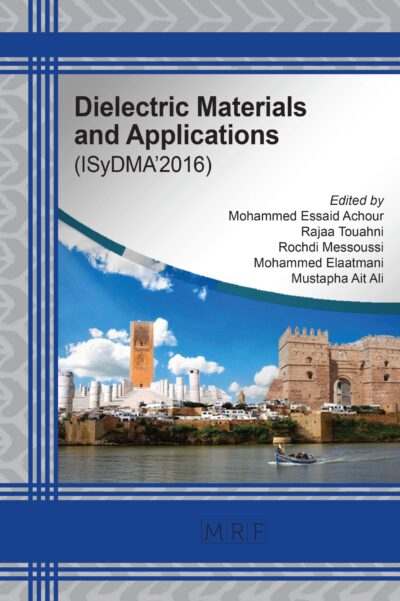Self-Supporting Bamboo Space Structure with Flexible Joints
L.E. Moreira, M. Seixas, J. Bina, J.L.M. Ripper
Abstract. This paper presents research results in the structural design and analysis of a self-supporting bamboo space structure. The developed structure presents a flexible connection system and a tensile structural behaviour. The modular frame of the architecture applied hinged lashed connections (HLC) in textile polyester ropes. The modular frame spans 15m width, 4m length and 7,5m high, using Phyllostachys pubescens bamboo culms. Nonlinear analysis of the structure under static loadings carried out using the Finite Element Method (FEM) through the SAP 2000 software. The analysis showed that loads induced by strong winds, overloads and self-weight are relatively low for the structural members and the developed connections. The results demonstrate that the self-supporting bamboo space structure meets the requirements of engineering design for safety. This analysis opens a series of another computational analysis calibrated with mechanical tests to determine natural frequencies and damping constant for the structure, demonstrating the potential to be used in earthquake regions.
Keywords
Bamboo, Self-Supporting, Space Structure, Flexible Joints, Engineering Analysis
Published online , 12 pages
Copyright © 2018 by the author(s)
Published under license by Materials Research Forum LLC., Millersville PA, USA
Citation: L.E. Moreira, M. Seixas, J. Bina, J.L.M. Ripper, ‘Self-Supporting Bamboo Space Structure with Flexible Joints’, Materials Research Proceedings, Vol. 7, pp 391-402, 2018
DOI: https://dx.doi.org/10.21741/9781945291838-37
The article was published as article 37 of the book Non-Conventional Materials and Technologies
References
[1] Khan, L.; Easton, B. Cobijo. Shelter Publications. Madrid: H. Blume Ediciones, 1979.
[2] Ribeiro, B. (org.); Ribeiro, D. (ed.) Suma etnológica brasileira. Updated edition of Handbook of South American Indians. Volume 2: Tecnologia indígena. Petrópolis: Ed. Vozes, 1987.
[3] Moreira, L.E.; Ripper, J.L.M. Jogo das Formas: Lógica do objeto natural. Rio de Janeiro: Nau Editora, 2014.
[4] Moreira, L.E.; Ripper, J.L.M. Métodos de ensino de design de produtos e sua aplicação às estruturas da engenharia civil. In: Congresso Brasileiro de Ensino de Engenharia COBENGE. Brasília, 2004.
[5] Ripper, J.L.M.; Moreira, L.E.; Silva, M.F. Desenvolvimento de estruturas auto-tensionadas de bambu no LOTDP. Agenda Pública: Drama Social. Faperj, Rio de Janeiro, RJ: 1999. P267-276.
[6] Seixas, M.A. Inserção social de arquiteturas temporárias de bambus e lonas têxteis utilizando tecnologias não-convencionais. Msc. Dissertation, Arts & Design Department. Rio de Janeiro: PUC-Rio, 2009.
[7] Fuller, R.B. Tensile-integrity structures US Patent 3063521 A, 1962.
[8] Ripper, J.L.M.; Moreira, L.E.; Ubésio, A. Cúpula Geodésica de Bambu. Proceedings of the V Encontro Brasileiro em Madeiras e em Estruturas de Madeira. Belo Horizonte, EEUFMG 1995. 12p.
[9] Seixas, M.A.; Ripper, J.L.M.; Ghavami, K. Prefabricated bamboo structure and textile canvas pavilions. Journal of the International Association for Shell and Spatial Structures, Vol. 57 nº 189, 2016, pp. 179-188. https://doi.org/10.20898/j.iass.2016.189.782
[10] Bambutec Design. www.bambutec.com.br (acessed on 22 September 2017).
[11] Seixas, M.; Bina, J.; Stoffel, P.; Ripper, J.L.M.; Moreira, L.E.; Ghavami, K. Active bending and tensile pantographic bamboo hybrid amphitheater structure. J. IASS, Vol. 58 nº 193, 2017. https://doi.org/10.20898/j.iass.2017.193.872
[12] Computers and Structures Inc. CSI Analysis Reference Manual for SAP, 2015.
[13] ABNT. NBR 6123: Forças devidas ao vento em Edificações. 1988.
[14] ABNT. NBR 8681: Ações e Segurança nas Estruturas. 2003.
[15] Lanna, C.A.C.; Moreira, L.E. Treliças Planas de Bambu com Bioconexões Compósitas. In: II Congresso Luso Brasileiro de Materiais de Construção Sustentáveis, João Pessoa, PB, 2016.












